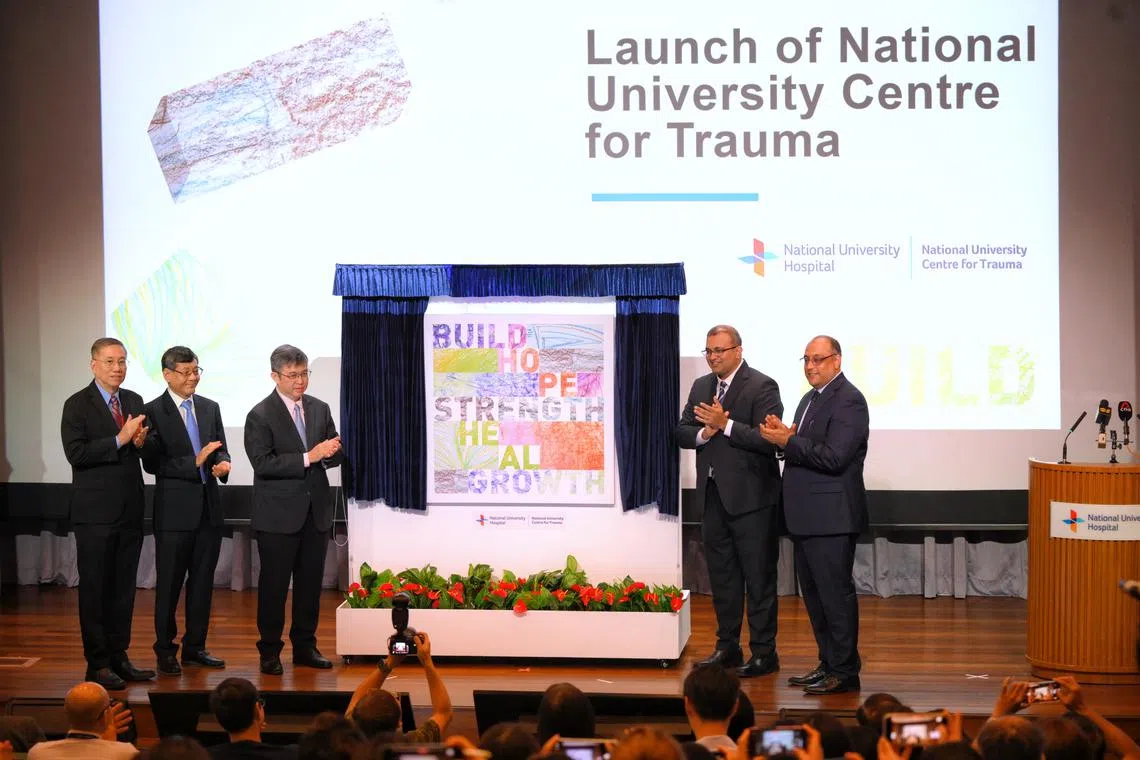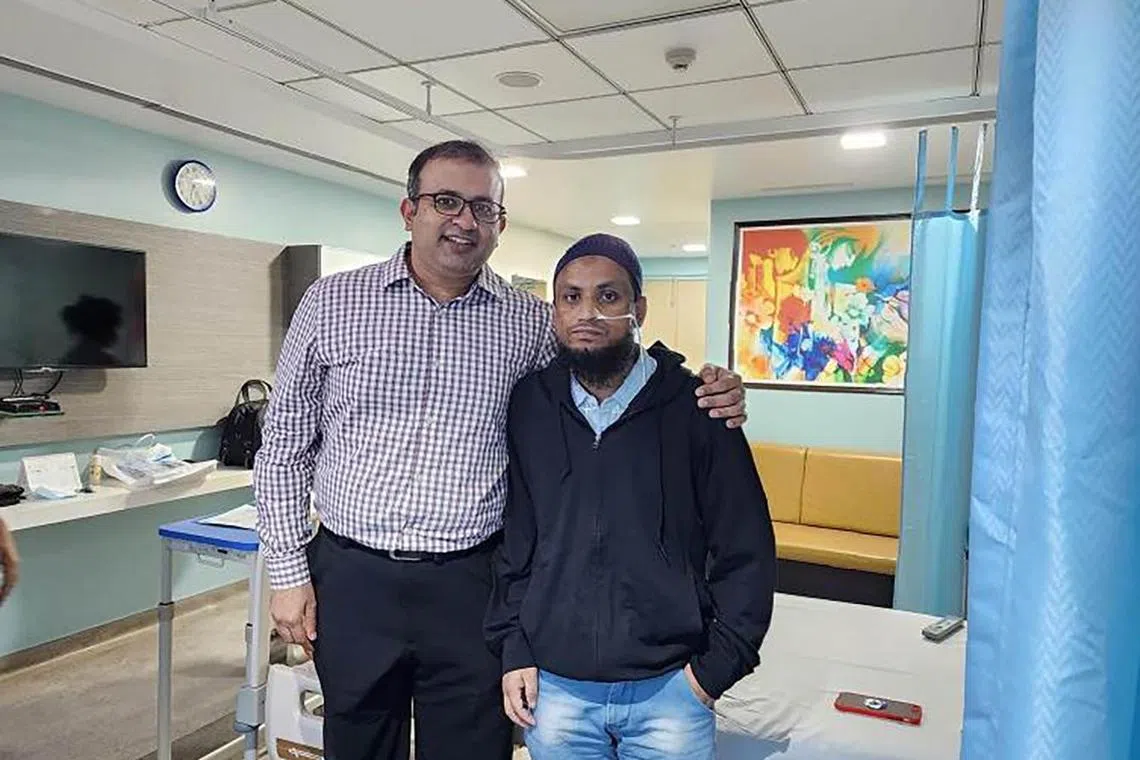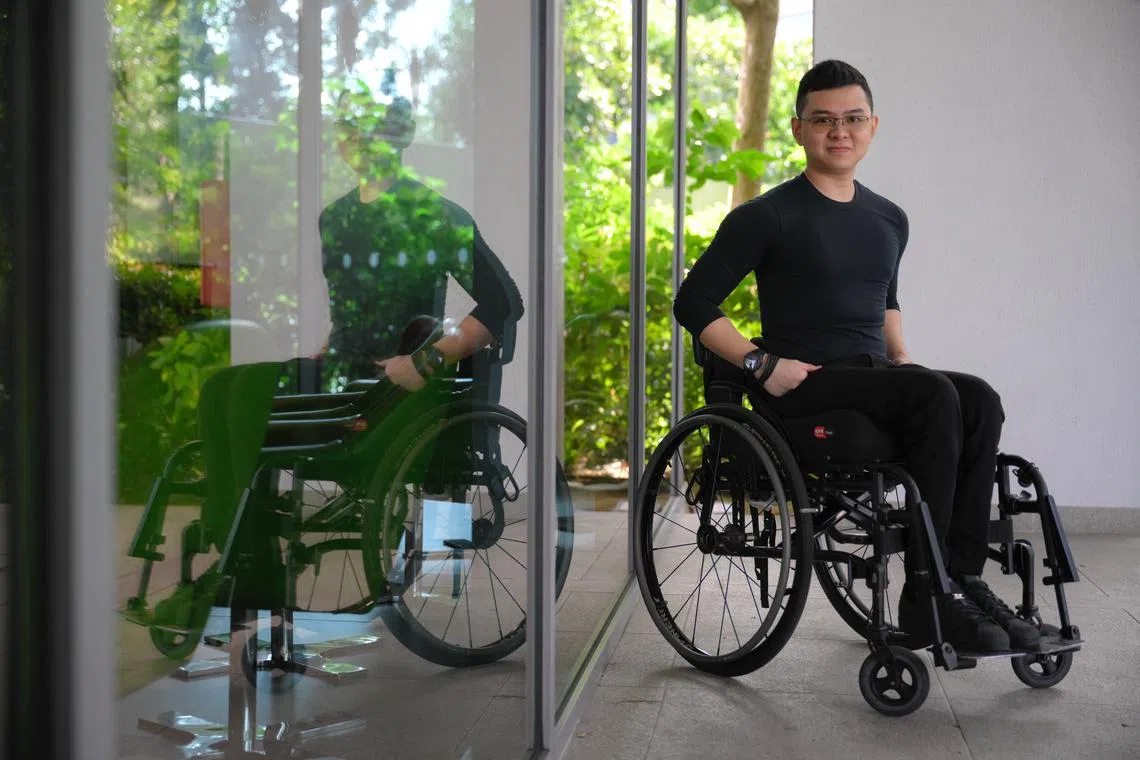Holistic care for patients with severe or life-threatening injuries at new NUH trauma centre
Sign up now: Get ST's newsletters delivered to your inbox

The centre will also lead efforts to enhance community safety and reduce the incidence of critical medical emergencies in the western region of Singapore.
ST PHOTO: MARK CHEONG
Follow topic:
SINGAPORE – Four years after coming to Singapore to earn a living and support his family in Bangladesh, Mr Rezaa Mohammad Salim had his abdomen crushed in 2016 when he was caught between an iron pipe and a crane in an accident at the shipyard where he worked.
His intestines were damaged beyond repair and had to be removed, leaving the then 23-year-old relying on intravenous feeding as he was no longer able to eat.
Mr Rezaa, now 30, may possibly be the longest-staying patient in National University Hospital (NUH), having spent nearly seven years in its wards as he underwent multiple operations and specialised treatments.
His is one of about 140 industrial accidents handled each year by NUH, which attends to about 1,300 severe and critical trauma cases annually.
On July 4, the hospital launched its National University Centre for Trauma, which provides holistic care to patients who have severe and even life-threatening injuries.
The new centre will also lead efforts to enhance community safety and reduce the incidence of critical medical emergencies in the western region of Singapore.
“Connecting to the broader efforts in injury prevention, the new National University Centre for Trauma will address critical aspects of trauma care, including clinical operations, audit and benchmarking, injury prevention, survivorship and research,” said Professor Kenneth Mak, director-general of health at the Ministry of Health, at the centre’s launch.
The new centre will coordinate care with other hospitals in the west, as well as upcoming hospitals, such as the future Tengah General and Community Hospital, said centre director Raj Menon.
It also hopes to prevent trauma cases from occurring, Adjunct Assistant Professor Menon said, adding: “My aim is to bring down trauma rates across the entire western region of Singapore and nationally as well.”

National University Centre for Trauma director Raj Menon (left) with Mr Rezaa Mohammad Salim, who had his abdomen crushed in 2016.
PHOTO: COURTESY OF REZAA MOHAMMAD SALIM
Prof Mak said the centre will leverage data to drive initiatives to increase awareness of injury prevention.
Migrant workers are one of three groups the new centre has identified for outreach and education efforts because the physical demands of their jobs expose them to a higher risk of trauma incidents.
According to the Ministry of Manpower’s Workplace Safety and Health Report 2023, sectors such as construction and manufacturing – which typically hire migrant workers – accounted for 60 per cent of fatal and major injuries in 2023.
As part of its outreach efforts the centre, together with non-profit organisation ItsRainingRaincoats, held an injury prevention workshop on June 30, covering topics such as spinal care management and first aid for severe injuries.
Children and older adults are the two other groups the centre has identified for outreach. It conducts workshops with pre-schools and active ageing centres to provide safety awareness training.
The new centre has also introduced Code Trauma, a response code which mobilises essential parties – such as emergency physicians, trauma surgeons and anaesthesiologists – to respond more quickly to patients with multiple injuries. This has halved the time in transferring a patient from the emergency department to the operating theatre.
There is a multidisciplinary trauma clinic that combines consultation and therapy in one session for recovering trauma patients, reducing the need for multiple sessions with different healthcare professionals.
The centre introduced Singapore’s first trauma survivor support group in 2023, which provides patients with resources and a sense of community.
One of the group’s pioneer members, Mr Marius Madsen – who is paralysed from the waist down after a near-fatal fall in 2020, when he was 15, caused a spinal injury – said listening to others’ stories helped him learn to cope with his own condition.
“It’s nice to know that I’m not alone,” said the 18-year-old para archer.

Mr Marius Madsen said listening to others stories helped him learn to cope with his own condition.
ST PHOTO: MARK CHEONG
As for Mr Rezaa, he said he felt down after the accident, but hospital staff supported him through tough times and helped lift his spirits.
In February 2023, he received an intestinal transplant at a hospital in Mumbai, India, after a global search by the NUH team for a suitable donor.
Prof Menon made the arrangements and accompanied him on the trip to ensure seamless transition of care.
Mr Rezaa can now eat and walk normally, and has since returned to Bangladesh, where he hopes to start his own business, and helps counsel other injured migrant worker patients at NUH via video-conferencing.
“(I tell them) don’t lose hope and don’t be sad,” he said.

